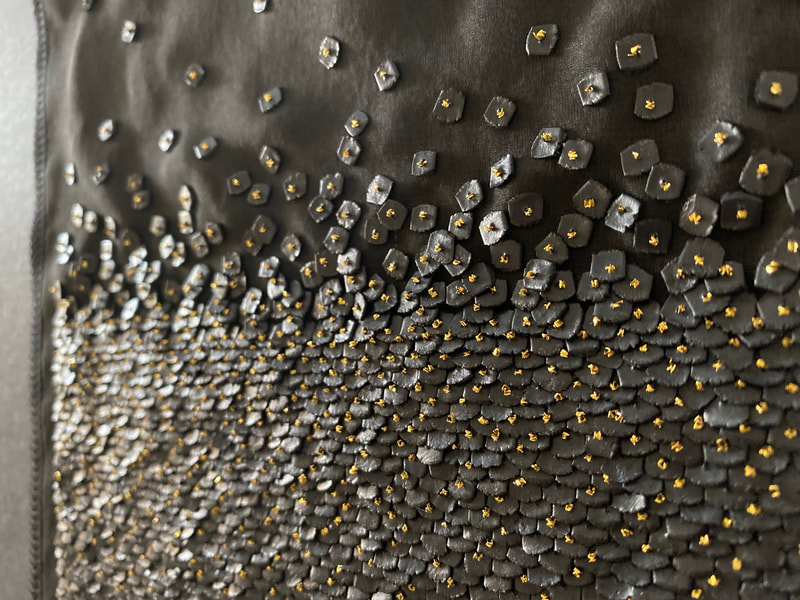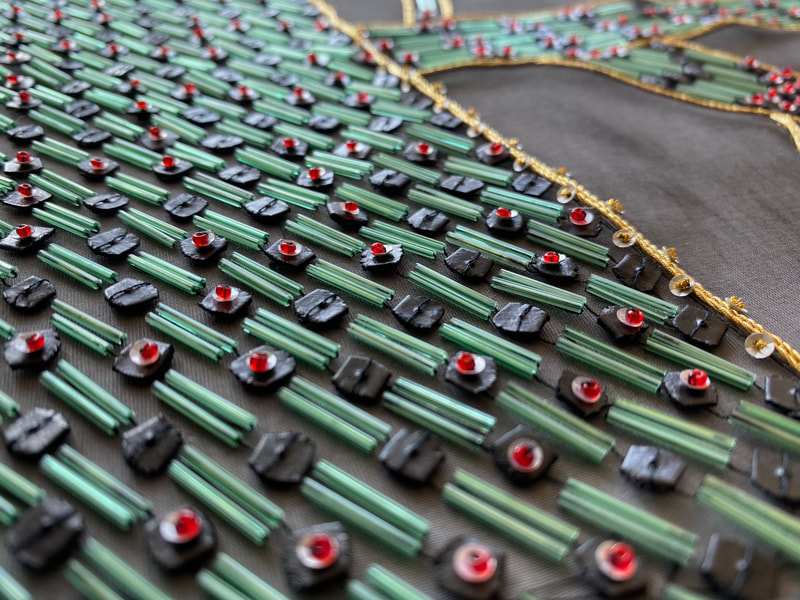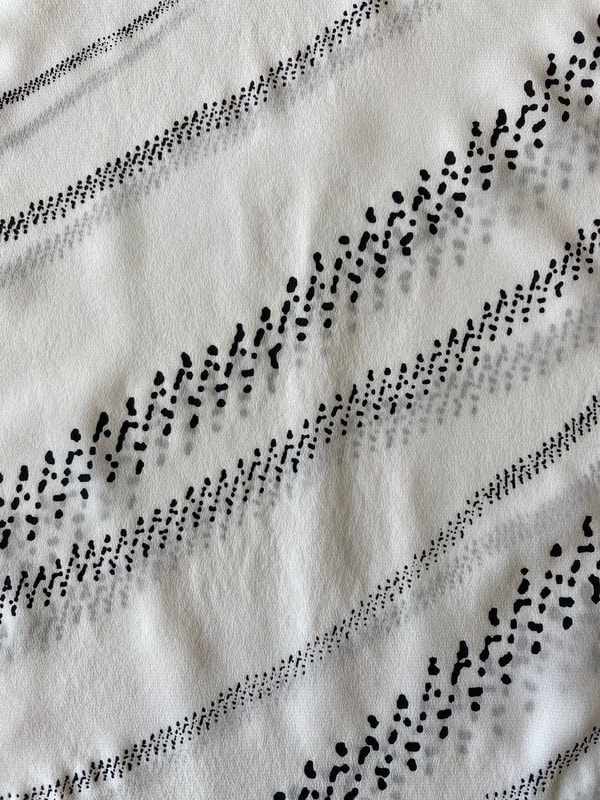The textile design samples shown below were conceived for couture garments.
Each sample contains captured carbon in the form of fabric dye, handmade sequins, screen print ink, or a combination.
Textile Sample #1: Carbon Scales
hand embroidery on fabric: organic silk dyed with graphitic nanoplatelets*, sequins made from PEN-100*, bright check purl
Carbon Scales is composed of sequins hand stitched in overlapping offset rows on silk fabric that has been dyed with graphitic nanoplatelets. Each sequin was made individually by hammering a nurdle of PEN-100 flat, then piercing the disc shape with a needle to create a hole. A gradually increasing gold shimmer sits atop the black surface, created by the addition of hand stitched chips made of a metalwork thread used in traditional goldwork embroidery.
*product made by Carbon Upcycling Technologies, see FAQ at the side for more information
Textile Sample #2: Linear Molecule Chevron
hand embroidery on fabric: organic silk dyed with graphitic nanoplatelets*, sequins made from PEN-100*, cup sequins, antique bugle beads,
seed beads, gilt twist thread
The fabric in this textile has been dyed with graphitic nanoplatelets and the black sequins made from PEN-100. The design is based on the linear molecule diagram of carbon dioxide with the sequins topped in a red bead representing oxygen, the pairs of green beads representing a double bond, and the black sequins representing carbon. Beads and sequins align in the bottom half of the embroidery to create a subtle chevron pattern.
*product made by Carbon Upcycling Technologies, see FAQ at the side for more information
Textile Sample #3: Keeling Curve
screen print on fabric: organic silk, ink made from graphitic nanoplatelets* and transparent ink base
This pattern is based on an abstracted and repeated image of the Keeling Curve, a graph depicting the changes in atmospheric carbon dioxide concentrations first recorded in 1958 by Dr. Charles David Keeling at the Mauna Loa Observatory in Hawaii. It has been printed with ink made from graphitic nanoplatelets mixed into a transparent ink base. The design has been layered on two separate pieces of silk to create a shadow effect. If the print were enlarged to cover an entire garment, the layers would move and shift on the wearer in the way that atmospheric CO2 levels move and shift.
*product made by Carbon Upcycling Technologies, see FAQ at the side for more information






























